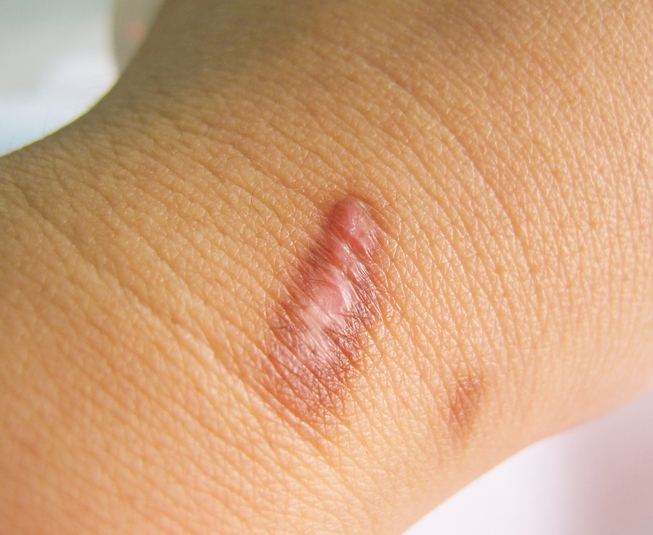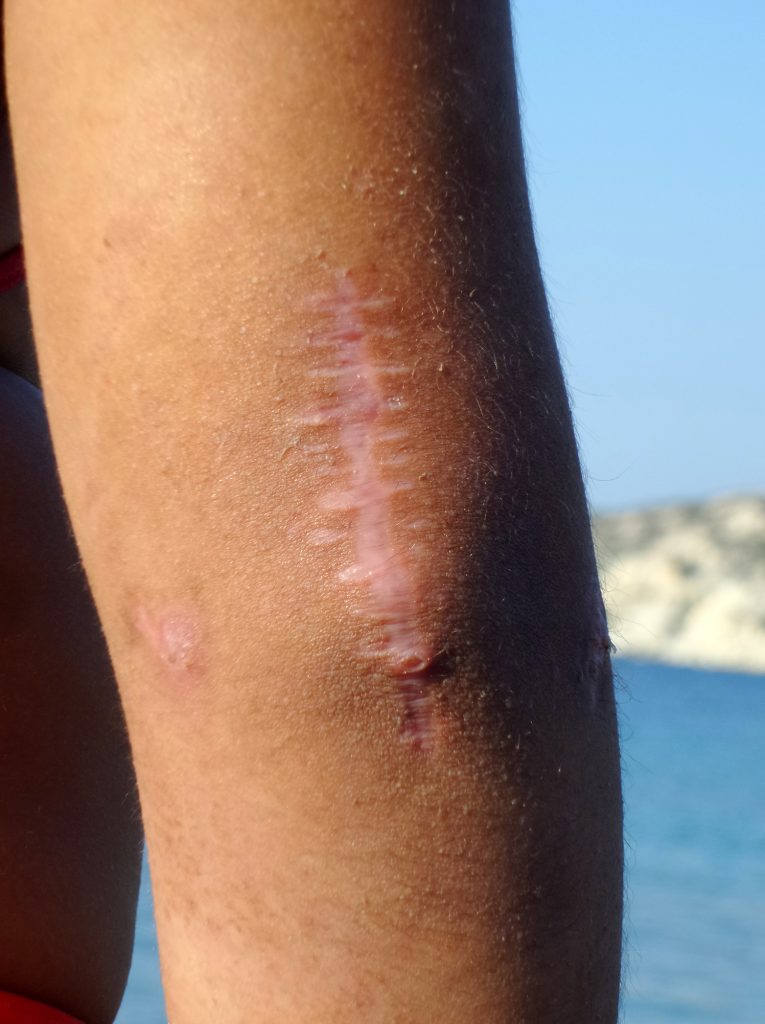Keloid Treatments from U.S. Dermatology Partners
What Are Keloids?
Keloids are raised, red scars created by excessive healing of skin wounds, such as burns, cuts and acne. They are the result of an overproduction of collagen as the skin tries to repair itself. Keloids also can occur after piercings, tattoos or surgery and often times are itchy and painful. They can grow for years and sometimes show up three months or longer after the injury occurred.

Keloid are caused by an overproduction of collagen as the skin tries to repair itself.
Find This Service Near You
Keloids Symptoms
Keloids form an area that is flesh-colored, pink or red in color, and is usually a raised, lumpy or ridged area of skin. It will continue grow over time and often is itchy and uncomfortable.
Who Is at Risk for Keloids?
People with darker skin are 15 to 20 times more likely to get keloids. However, people with lighter skin sometimes get them as well. They are more common in people younger than 30, pregnant women and teenagers going through puberty. A family history of keloids also makes you a more likely candidate.
Keloids Treatments

Keloids can appear anywhere on the body.
There is little that can be done to treat keloids and, unlike other scars, they do not disappear with time. For thinner keloids, applying over-the-counter silicone gel sheets can help compress the mass. Larger keloids can be treated with steroid injections to thin the collagen fibers. In some cases, surgical removal may be most effective, although you would need to consult with your doctor to address concerns about another keloid growing in its place.
Keloids Prevention
If you are at risk for keloids, you should avoid piercings, surgery or other skin damage whenever possible. Many people ask the question “where can I receive keloid treatment near me?”. If you need surgery, let your doctor know that keloids are a concern, as some treatments such as corticosteroid shots may help prevent keloids after surgery.
*Results may vary by individual
